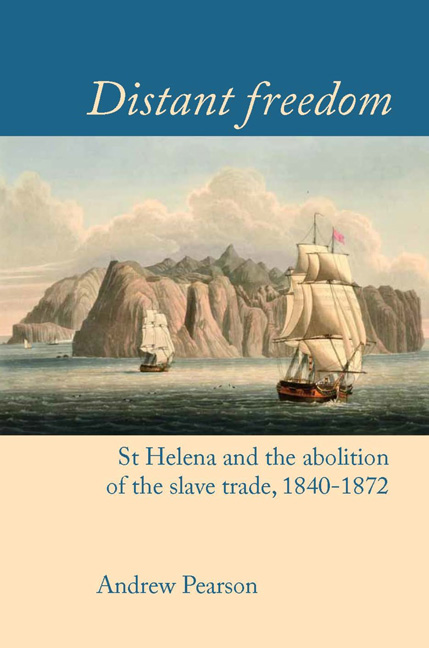Book contents
- Frontmatter
- Dedication
- Contents
- Figures
- Tables
- Acknowledgements
- Introduction
- Map
- 1 A Place of Immense Advantage
- 2 London and Jamestown
- 3 Sailortown
- 4 Life and Death in the Depots
- 5 ‘All, all, without avail’
- 6 After ‘Liberation’
- 7 Island Lives
- Conclusion
- Appendix 1 Liberated Africans Captured aboard Slave Ships: Cases Tried at Freetown, Luanda, Cape Town and St Helena, 1836–68
- Appendix 2 Prizes Adjudicated by the Vice-Admiralty Court of St Helena
- Appendix 3 Liberated African Emigration from St Helena
- Appendix 4 Emigrant Voyages from St Helena
- Bibliography
- Index
4 - Life and Death in the Depots
- Frontmatter
- Dedication
- Contents
- Figures
- Tables
- Acknowledgements
- Introduction
- Map
- 1 A Place of Immense Advantage
- 2 London and Jamestown
- 3 Sailortown
- 4 Life and Death in the Depots
- 5 ‘All, all, without avail’
- 6 After ‘Liberation’
- 7 Island Lives
- Conclusion
- Appendix 1 Liberated Africans Captured aboard Slave Ships: Cases Tried at Freetown, Luanda, Cape Town and St Helena, 1836–68
- Appendix 2 Prizes Adjudicated by the Vice-Admiralty Court of St Helena
- Appendix 3 Liberated African Emigration from St Helena
- Appendix 4 Emigrant Voyages from St Helena
- Bibliography
- Index
Summary
It has been observed that, at the heart of Atlantic slavery, the relationship between captive and captor was in many regards a war, and the slave ship was a critical site where that war was waged. in such terms, the Liberated African Establishment on St Helena might be seen as a liminal place in which the relationship between European and former slaves began to be redefined. Nevertheless, it was still a place where Briton ruled over African, and white over black.
The ‘Establishment’ was not confined to a single place, but was in fact spread across several locations on the island. Its main foci were the reception depots in Lemon Valley and Rupert's valley, but they were managed from Jamestown, while other places also played a lesser role. The depots themselves are best understood via the familiar modern terminology of a refugee camp, but at the time such a concept was novel. Circumstances involving the treatment of large numbers of sick were certainly known (for example, those associated with warfare or urban epidemics), but in many ways the African depots at Sierra Leone, St Helena and other sites around the Atlantic rim were pathfinders for what has become a commonplace in the modern world. The means of dealing with problems of hygiene, of mass disease and malnutrition, and of the logistical support of large dependent populations were all pioneered in these remote nineteenth-century settings. This chapter considers St Helena's Liberated African Establishment in these contexts, and relates the lives and deaths of those within it.
The depots and their staff
Liberated Africans were received in two locations, both on the leeward coast of St Helena. The first of these, Lemon Valley, 3 km to the south-west of Jamestown, was one of the very first areas to be explored by the Portuguese after their discovery of the island in 1502. its fertility was remarked upon from an early date, a Dutch commander once describing a landscape filled with orange, lemon and pomegranate trees. The valley's pristine environment did not, of course, long survive the ravages of man or of introduced fauna and flora. By the mid-nineteenth century, there were just a few lemon trees left, ‘withered by neglect’, the rest having been consumed by goats or cut down by sailors to save themselves the trouble of picking the individual fruit.
- Type
- Chapter
- Information
- Distant FreedomSt Helena and the Abolition of the Slave Trade, 1840–1872, pp. 106 - 153Publisher: Liverpool University PressPrint publication year: 2016



